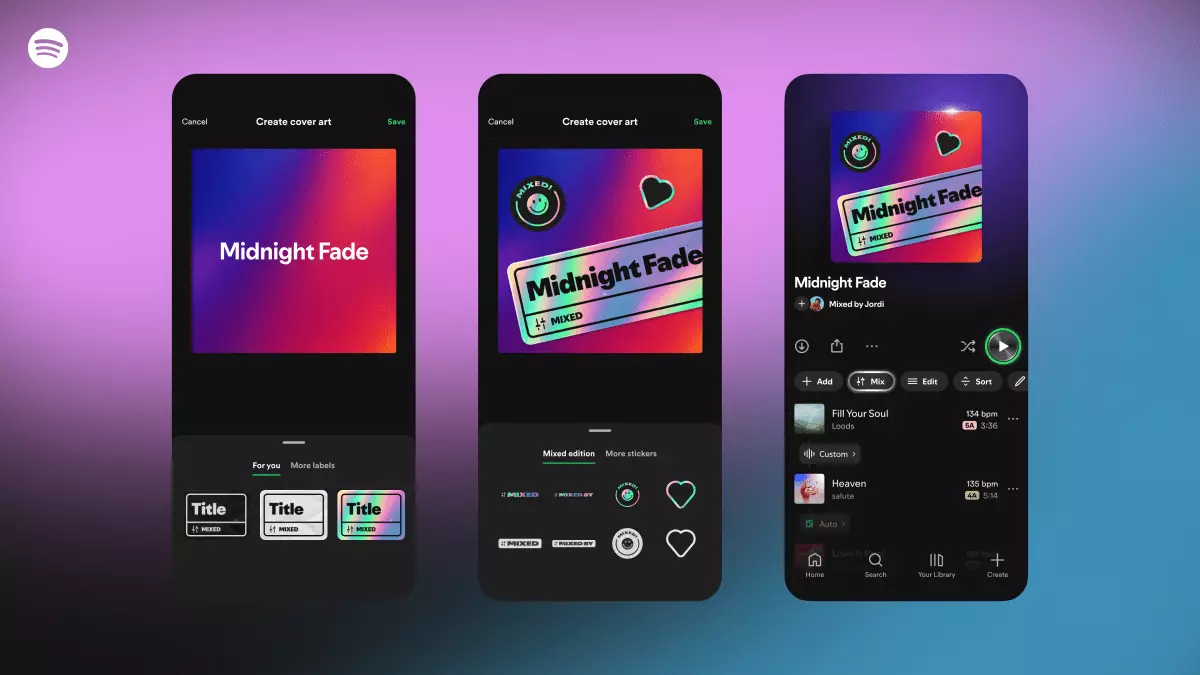Spotify’s latest feature introduces a significant shift in how users engage with their playlists, transforming passive listening into an immersive experience. By empowering users to craft seamless, professional-sounding transitions between tracks, the platform does more than just offer a new tool—it redefines the concept of playlist customization. This move signals Spotify’s recognition of the growing demand for sophisticated, personalized music environments, especially among dedicated enthusiasts and aspiring DJs.
Unlike traditional playlists, which often feel static and uninspired, the custom transitions feature infuses life and continuity into the listening journey. The ability to automate or personalize transition effects like fades, rises, and blends transforms a simple collection of songs into a curated soundscape. It’s a gamble that acknowledges modern listeners’ desire to control every sonic detail, layering their emotional and aesthetic preferences into their playlists. This innovation not only enhances user engagement but also positions Spotify as an active participant in the art of music mixing—arguably the next frontier for mainstream music platforms.
Technical Sophistication Meets User Accessibility
What makes Spotify’s new feature stand out is its thoughtful balance between complexity and accessibility. For users unfamiliar with audio editing or DJ software, the platform provides intuitive tools—automatic display of beats-per-minute and key data facilitates seamless transitions even for novices. The inclusion of preset styles like fade, rise, or blend, combined with manual adjustment options, caters to both casual and expert users alike.
This emphasis on usability reflects an understanding that the power of customization should not be confined to professional DJs or audiophiles. Instead, Spotify aims to democratize the art of creating smooth, engaging playlists—whether it’s for a workout, a party, or a relaxing evening. Nevertheless, the feature smartly encourages experimentation; users can tweak volume and EQ settings, utilize waveform data for precise transitions, or incorporate effects that align with their musical taste. In doing so, Spotify grants access to advanced audio editing tools without overwhelming those new to the craft.
Strategic Competition and Market Positioning
Spotify’s introduction of custom transitions is not merely about enhancing user experience; it’s a calculated move in a broader strategic landscape. As Apple Music prepares to launch its AutoMix feature, claiming to blend tracks “like a DJ,” Spotify had to respond to maintain its competitive edge. This feature allows Spotify to stake its claim as the platform for both casual listening and more involved, creative playlist curation.
By enabling social sharing and collaboration—allowing users to invite friends into their mix or share finished products—Spotify extends its social ecosystem, encouraging community building around playlist creation. This aligns with the company’s ongoing efforts to deepen user engagement through personalized tools that foster a sense of creative ownership. Moreover, the ability to toggle the mix on or off provides flexibility, catering to different environments, moods, or occasions, making the feature versatile and user-centric.
The Future of Music Consumption Is Personal
Beyond the immediate appeal of customizing transitions, Spotify’s move reflects a broader cultural shift within the music industry—towards highly personalized, interactive, and immersive experiences. Users no longer merely listen passively; they seek tools to shape their sonic environment, turning playlists into moments of artistic expression. This is especially relevant in a streaming age where algorithms and recommendations can often feel impersonal or generic.
Spotify’s embrace of this trend demonstrates confidence in the platform’s ability to evolve with its audience’s desires. As the feature rolls out across markets, it hints at a future where the line between listener and creator blurs further. Creativity becomes embedded within the very act of listening, transforming the familiar experience of playlist curation into something more akin to musical storytelling. It’s a move that not only elevates Spotify’s brand but also sets a precedent, challenging competitors to match its level of personalization and technical innovation.
—
This critique underscores how Spotify’s new feature is more than a novelty; it’s a strategic leap toward empowering users to craft deeply personal musical journeys. While the technical execution is commendably user-friendly, the real brilliance lies in how it positions Spotify as a platform that fuses accessibility, creativity, and competition—steadily pushing the boundaries of what a music service can achieve.

